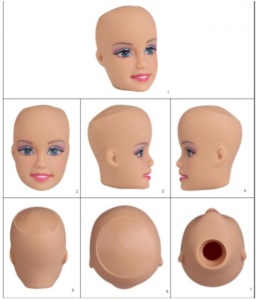BACKGROUND TO THE DISPUTE
On 7 May 2014, JIEYANG DEFA INDUSTRY CO. LTD, filed an application for registration of a Community design with the European Union Intellectual Property Office (EUIPO). The Community design is represented in the following views:

On 4 August 2017, MATTEL, INC. filed an application for a declaration of invalidity of the contested design. The intervener submitted that the contested design lacked novelty and individual character in relation to the earlier designs Defa Doll and Barbie CEO Sculpture:

On 10 July 2019, the Cancellation Division upheld the application for a declaration of invalidity and declared the contested design invalid. The applicant filed an appeal with EUIPO, but the Third Board of Appeal dismissed the appeal. In essence, it found that the contested design lacked individual character and that the overall impression produced on the informed user by the two designs was the same.
DECISION OF THE GENERAL COURT
It is necessary to point out, as do EUIPO, that a general design trend cannot be regarded as a factor which restricts the designer’s freedom, since it is precisely that freedom on the part of the designer that allows him to discover new shapes and new trends or even to innovate in the context of an existing trend.
It follows that the need for doll manufacturers to follow market trends in order to promote sales of the products concerned or to comply with beauty standards cannot be regarded as a factor which may limit the designer’s degree of freedom.
The Board of Appeal was right to find that the designer enjoyed a wide degree of freedom in developing dolls’ heads and that that freedom was not limited by market preferences as regards the appearance of ‘fashion dolls’.
Secondly, it considered that the designs at issue had the following features in common: the colour of the skin; the shape of the face; the shape and colour of the eyebrows, eyes and eyelashes; thin lips with the same smile; a thin nose; and the position of all of those features. It should be noted that all of the features and their positioning contribute to the creation of the impression of an identical face in the designs at issue.
Thus, the Board of Appeal was entitled to take the view that the attention of the informed user will be drawn to the fact that the designs at issue showed dolls’ heads, the faces of which had an oval shape and identical features and proportions, very similar make-up and the same expression.
Therefore, it must be held that, for the reasons set out above, the designs at issue do not produce a different overall impression on the informed user. It follows that the Board of Appeal was right to find that the contested design lacked individual character.
JUDGMENT OF THE GENERAL COURT (SECOND CHAMBER) 1 DECEMBER 2021. CASE T‑84/21,


 Español
Español Deutsch
Deutsch